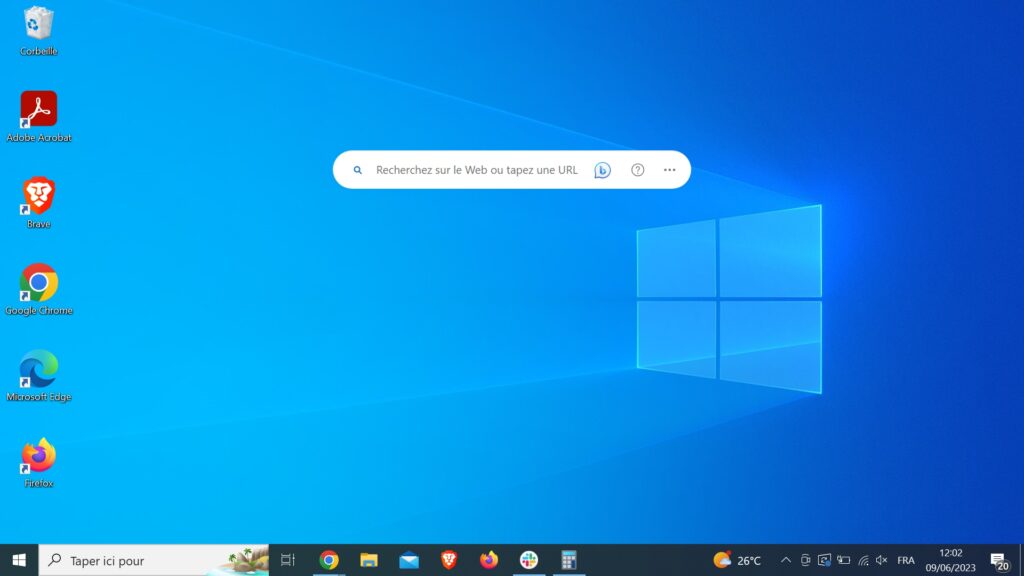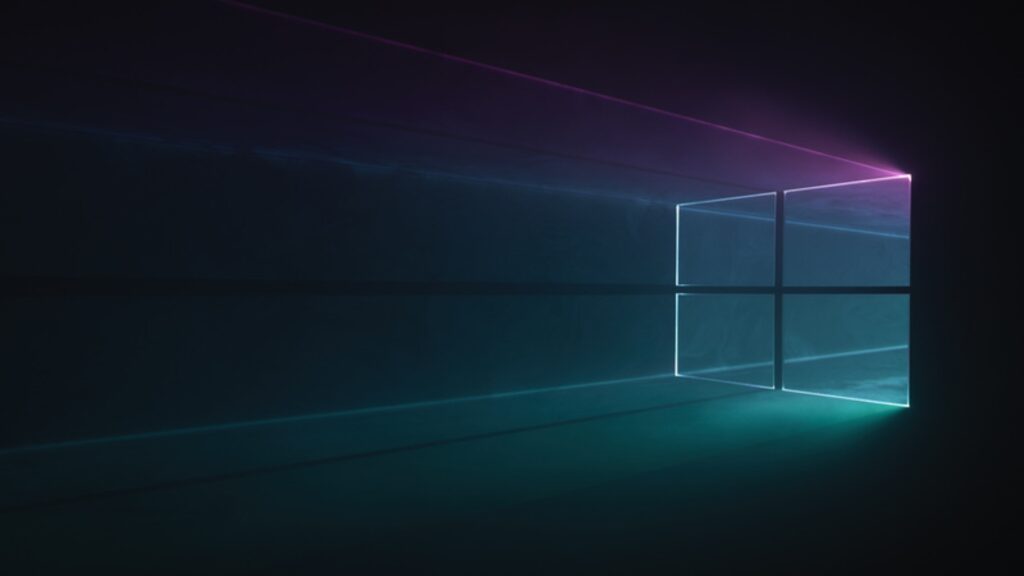Windows 10 wallpaper is not artificial, it is a real photo
The classic Windows 10 wallpaper is known to all Microsoft computer users. One might think that it is an artificial creature. However, it is a picture made by an artist.
Original wallpapers for Windows 10 PC are as simple as they are creative. In a changing color background we always find the illuminated legendary logo of the operating system. Among the billions of users, few know the true origin of this virtual wallpaper, called “Hero”. Contrary to what many spontaneously believe, it is not a pure computer creation. In fact, it is a photo taken by digital artist GMUNK.
on his site, The American designer explained why he undertook such a project before the arrival of Windows 10 in 2015. For him, the Windows logo is much more than that. Only four tiled squares It is a space in itself, by extension The energy that shines through and gives a sense of thrust This thinking made Gmunk want to take this photo to tell the story of Microsoft, but also ” Developments and technologies that allow the brand to move forward into the future All this just through the Windows 10 logo.

Selective way to create hero
To generate the hero, GMUNK and his team conducted a majestic photo shoot, during which they alternated between several photo projects. ” Our core concept was to position the logo as a gateway to the world behind it. We customized and artistically directed each image to evoke the timelessness of Windows and its ability to take us anywhere we want to go. We thought the best way to do that was to build hands-on and shoot it explains the artist on his site.




To get close to the Windows logo, the photographer’s team also had to reproduce the highlighted windows, while looking for ” Innovative camera angles and lively stone lighting After obtaining several images of the logo, they were combined in post-production to create the ” Volumetric lighting assembly This is what allows today’s Windows 10 users to be able to use so many variants of wallpaper.




Gmunk wanted to allow users to choose the shade that suits them best. “ The advantage of this hands-on approach is that we can literally take thousands of photos, which means that once we had our main photo, we went on shooting and got countless types for each setting. »
Long work for one photo
With several plays of light (which came from a laser projector) through the windows, GMUNK and his colleagues used countless techniques. One can cite in particular the use of the natural haze of ” It brings bold, moody definition and a distinctive, sexy look ».
All of these techniques took more than 3,000 photos, which had to be sorted to keep the best shots. It was then processed in Photoshop by Munko, one of GMUNK’s colleagues. Thanks to this processing, the images were able to reach 9K resolution. In other words, 9000px. We’re still talking about better pictures than 8K TVs. The accuracy was such that the work was very hard. But that was enough to convince Windows and Microsoft team members that the logo’s aesthetic was right.
After this stage, Monko incorporated what he calls ” Environmental permits »Layers of smoke and haze were shot separately to create a very dark painting. The final touch was provided by the lenses, which are also pictured separately. However, here the lenses were illuminated by ” A light source placed in the same place as the laser projector, so that the pieces line up perfectly ». This is how the “Hero” wallpaper was born. »and its many color alternatives, which still grace the screens of many Windows 10 users, even in 2023.
Want to know everything about the mobility of the future, from electric cars to pedals? Subscribe now to the Watt Else newsletter!


“Incurable web evangelist. Hipster-friendly gamer. Award-winning entrepreneur. Falls down a lot.”
